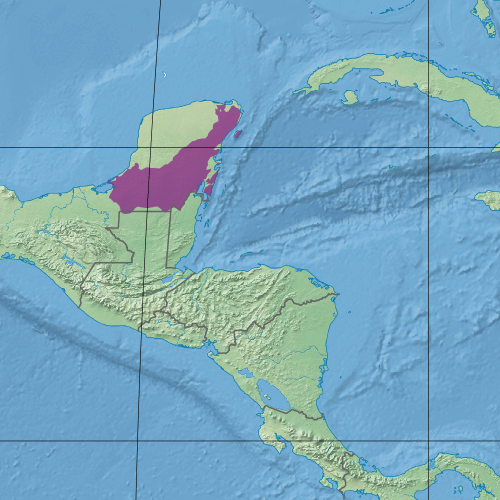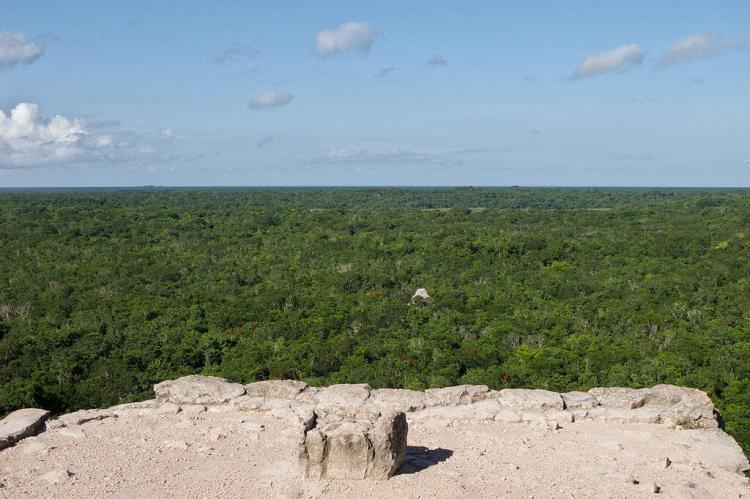The Yucatán Moist Forests: A Tropical Treasure Trove
Spanning the Yucatán Peninsula of southeastern Mexico and extending into northern Guatemala and Belize, the Yucatán moist forests ecoregion stands as a remarkable tropical treasure trove. This ecoregion offers a unique blend of biodiversity, geological wonders, and cultural heritage.
The Yucatán Moist Forests: A Tropical Treasure Trove
Spanning the Yucatán Peninsula of southeastern Mexico and extending into northern Guatemala and Belize, the Yucatán moist forests ecoregion stands as a remarkable tropical treasure trove. This ecoregion, which covers 69,700 square kilometers (26,900 square miles), is part of the tropical and subtropical moist broadleaf forests biome, offering a unique blend of biodiversity, geological wonders, and cultural heritage.
Geographical Setting
A Peninsular Oasis
The Yucatán moist forests ecoregion is situated on the Yucatán Peninsula, a region characterized by a humid tropical climate and relatively flat topography. This geographical setting starkly contrasts with the surrounding drier environments, creating a verdant oasis that supports a diverse array of flora and fauna.
The Karst Landscape
Much of the ecoregion lies atop rugged, weathered limestone formations known as karst. These unique geological features are renowned for their ability to harbor numerous endemic plant species, further contributing to the region's biodiversity richness.
Climate and Hydrology
A Tropical Haven
The temperature within the Yucatán moist forests remains relatively constant throughout the year, reflecting the region's tropical and humid climate. This stable thermal regime, combined with ample rainfall, creates an ideal environment for the flourishing of diverse ecosystems.
Akalché: Periodic Flooding
Certain areas within the ecoregion are characterized by deep soils called akalché, which experience periodic flooding. These inundated areas provide crucial water sources for native villagers and the region's wildlife, ensuring the survival of numerous species adapted to these unique hydrological conditions.
Ecological Connectivity
The Yucatán moist forests serve as a crucial ecological corridor, facilitating the movement and gene flow of various species between the drier forests of northern Yucatán and the more humid environments of southwestern Yucatán and Central America. This connectivity is essential for maintaining genetic diversity, enabling species to adapt to changing environmental conditions, and promoting the overall resilience of the region's ecosystems.
Furthermore, the ecoregion's diverse habitats, including swamps, marshes, and riparian zones, support a wide range of specialized plant and animal communities. Each plays a vital role in the intricate web of life that sustains the region's biodiversity.
Biodiversity Riches
A Tapestry of Life
The Yucatán moist forests are home to a remarkable diversity of life, including more than 15 species of amphibians, 40 species of reptiles, 200 bird species, and 90 mammal species. While relatively few endemic species are found within the ecoregion, the overall biodiversity is remarkably high, reflecting the region's ecological importance.
Floral Diversity
The Yucatán moist forests are rich in animal life and boast a diverse array of plant species. The region's vegetation ranges from towering canopy trees to dense understory shrubs and herbaceous plants. Notable tree species include the valuable chicozapote (Manilkara zapota), the endemic Breadnut (Brosimum alicastrum), and the iconic ceiba (Ceiba pentandra), also known as the kapok tree.
Forest floors are often covered with a mosaic of ferns, orchids, bromeliads, and other epiphytic plants, adding to the lush and vibrant tapestry of life that characterizes this ecoregion.
Feline Prowess
Several iconic feline species inhabit the ecoregion, including the margay, a small spotted cat known for its remarkable climbing abilities and ability to rotate its rear paws inward to climb down trees. The ocelot, a skilled hunter of monkeys and birds, the jaguarundi, which preys on small rodents and ground-nesting birds, and the elusive jaguar, a top predator, also call the Yucatán moist forests home.
Avian Diversity
The ecoregion is a veritable avian paradise, with species ranging from the black and white owl to the majestic King vulture, ocellated turkey, harpy eagle, great curassow, scarlet macaw, and Yucatán parrot. The southeastern portion of the region, characterized by swampy conditions, is home to chicle, fiddlewood, and chaca trees, with palms scattered throughout the understory.
Endemic Treasures
The island of Cozumel, located just off the eastern coast of the Yucatán Peninsula, boasts several endemic species, including the Cozumel vireo, thrasher, emerald hummingbird, Cozumel Island raccoon, and coati. Meanwhile, the northern part of the ecoregion is an important area for various bird species, including the Caribbean Elaenia, migratory species such as prairie warblers and peregrine falcons, and locally distributed species like the Caribbean dove, Zenaida dove, and black catbird.
Conservation Challenges
Despite its rich biodiversity, the Yucatán moist forests ecoregion faces significant conservation challenges. Almost all the forests in the northern part of the coastal plain have been lost to logging, agriculture, and cattle farming. The remaining forests remain cleared for expanding human populations and road construction.
Game hunting and the illegal trade in wild species also threaten many already endangered species within the ecoregion. While several reserves have been established to protect the remaining habitat, logging and cattle farming continue encroaching upon these precious forests.
Concerted conservation efforts, sustainable land management practices, and community engagement are essential to preserving the ecological integrity of the Yucatán moist forests and ensuring the long-term survival of its unique flora and fauna.
Cultural Significance
It is worth noting that the Yucatán moist forests ecoregion once supported a large human population and extensive agriculture during the Maya period, underscoring the region's deep cultural and historical significance. Preserving the remaining forests safeguards biodiversity and protects a vital component of the region's cultural heritage.

Map illustrating the extent of the Yucatán moist forests (in purple).
